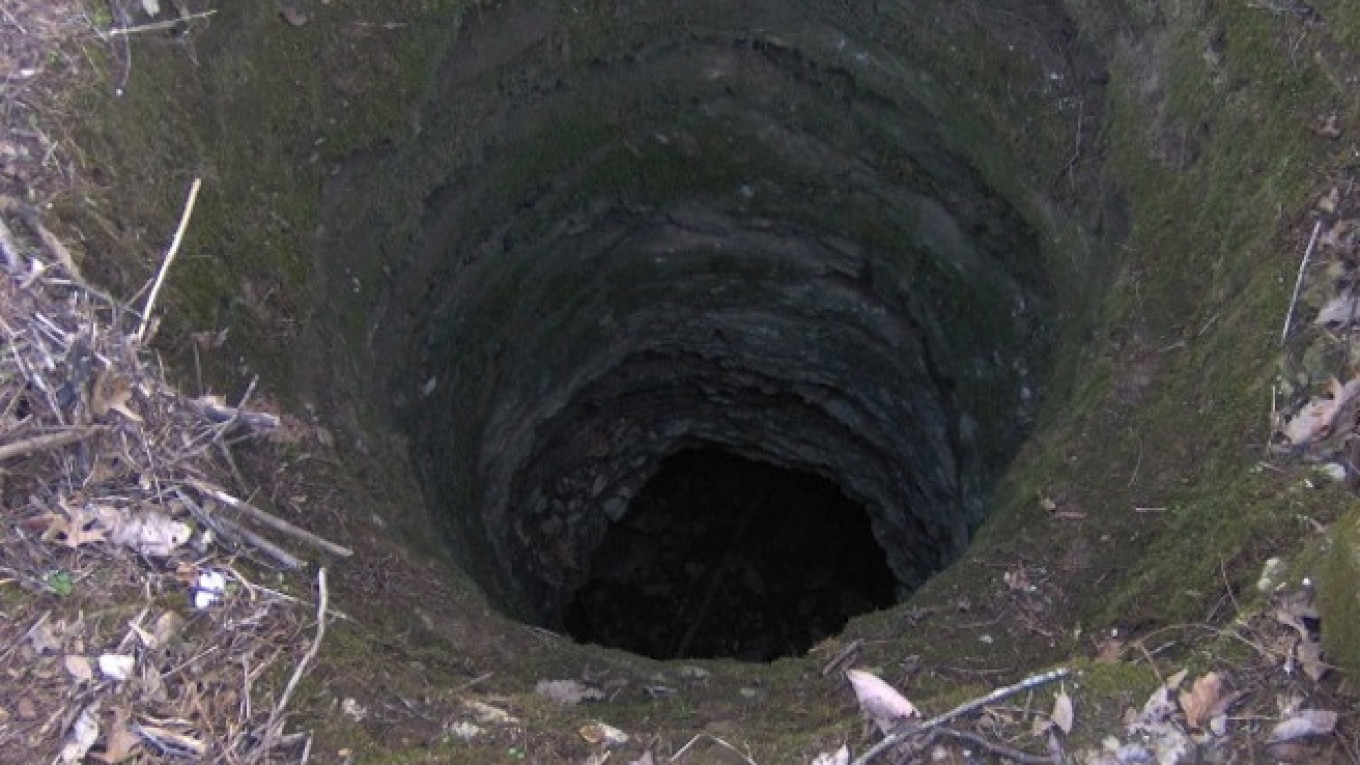Another giant sinkhole has appeared in Russia's Perm region, which has seen its soil imploding into a series of large craters in recent years, possibly as a result of the vast network of mines in the area.
The latest sinkhole appeared in the village of Lunyevka, in the Aleksandrovsk district of the Perm region. The town had been a coal mining center, but the last mine was closed there more than 50 years ago the head of the district administration, Lyubov Babich, was quoted as saying by the local Valekse news portal on Monday.
Accounts of the sinkhole size varied. The head of the Aleksandrovsk district civil defense department, Alexander Golchikov, put it at 20 meters in diameter and 10 meters deep, the regional outlet of the national Argumenty i Fakty newspaper reported. Meanwhile, Babich estimated the size at 25 meters in diameter and 4 meters deep, Valekse reported.
"Part of a potato patch and several trees have gone underground," a community group of Aleksandrovsk residents wrote on Russia's VKontakte social network.
The new sinkhole follows an even larger one that appeared in the Perm region town of Solikamsk last fall after an inflow of water during a mining accident at the Solikamsk-2 mine. Uralkali, the world's largest potash company, which owns the mine, suspended operations there as emergency services struggled to contain the expansion of the crater.
A series of similar incidents over the past few years also occurred in mines around Berezniki.
The most serious one took place in 2006, when Uralkali was forced to close the Berezniki-1 mine after it was flooded with brine inflow.
A number of other sinkholes in Berezniki followed, including one in the middle of the town this February, according to media reports. That sinkhole ripped through the ground near a local school that had been shut down and "quarantined" in 2007 following previous incidents, the GorodBerezniki news portal reported.
The causes of the latest sinkhole in Lunyevka remained unclear.
The crater could have "appeared on the location of a hole that has been here always," regional mining institute director Alexander Baryakh was quoted by Valekse news portal as saying, adding that it has not yet been determined what caused the original hole.
The sinkhole may or may not have been caused by abandoned mines that had operated in the district between 1857 and 1953, the head of the Aleksandrovsk administration's environment and natural resources department, Yuri Letov, was quoted as saying.
No detailed engineering schemes of the mines were available, and little was known about which areas may have become flooded after the mines were abandoned, he said, Valekse reported.
A Message from The Moscow Times:
Dear readers,
We are facing unprecedented challenges. Russia's Prosecutor General's Office has designated The Moscow Times as an "undesirable" organization, criminalizing our work and putting our staff at risk of prosecution. This follows our earlier unjust labeling as a "foreign agent."
These actions are direct attempts to silence independent journalism in Russia. The authorities claim our work "discredits the decisions of the Russian leadership." We see things differently: we strive to provide accurate, unbiased reporting on Russia.
We, the journalists of The Moscow Times, refuse to be silenced. But to continue our work, we need your help.
Your support, no matter how small, makes a world of difference. If you can, please support us monthly starting from just $2. It's quick to set up, and every contribution makes a significant impact.
By supporting The Moscow Times, you're defending open, independent journalism in the face of repression. Thank you for standing with us.
Remind me later.


